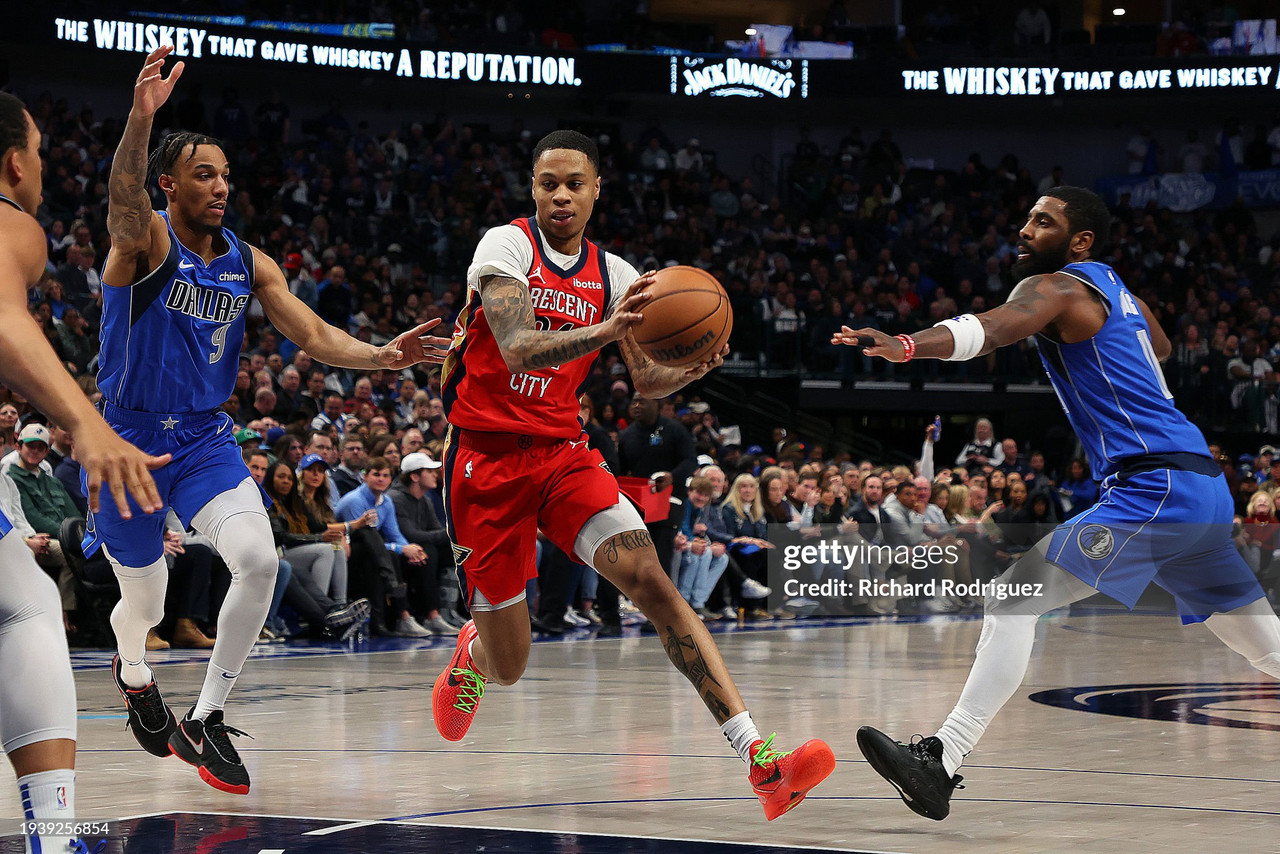Jordan Hawkins has surprised many fans with multiple outstanding performances since the start of the season. The 21-year-old has proven to be a threat from the perimeter using unpredictable movement to score threes consistently.
Hawkins not only relies on himself to create opportunities to shoot but also uses teammates like Cody Zeller and Zion Williamson to set up screens and generate space. Opponents are aware of the rookie's 39.4 three-point percentage which forces them to close him down and guard tightly. This allows Hawkins to make a run towards the paint and score a lay-up uncontested for an easy two points.
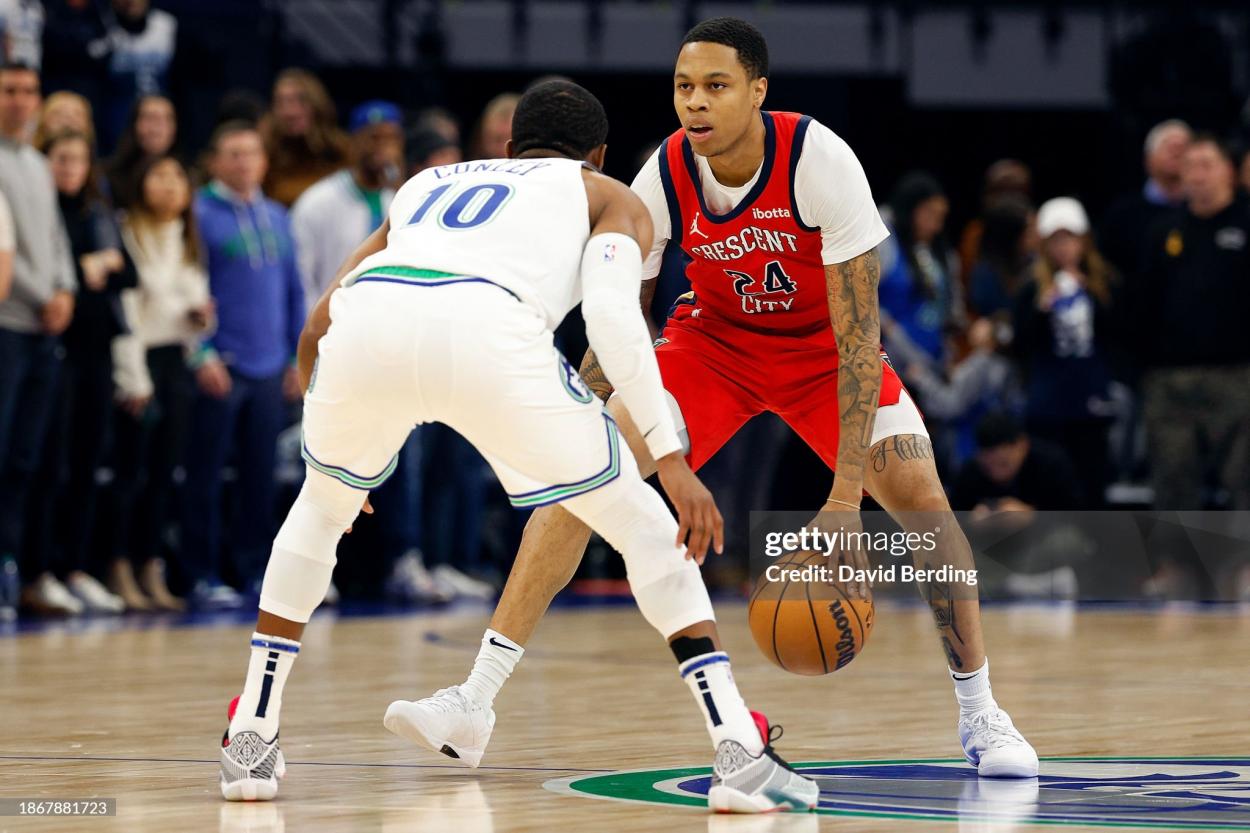
The former UConn Huskies player uses pump fakes frequently when attacking to trick defenders into jumping for a block which gives him time to adjust his body and shoot. Teams try to combat his attacking threat by funneling Jordan into the paint which can lead to an easy two-point shot attempt.
If he is heavily guarded in the paint, the guard has the awareness and basketball IQ to pass the ball to an open teammate like Williamson who can use his strength and power to either dunk or push for a lay-up. Hawkins is important to the setup of the Pelicans as they lack players who can shoot efficiently from outside the D and rely on him to offer that threat when he is on the court.
The American basketball prodigy demonstrated his shooting ability before entering the NBA at the University of Connecticut. Jordan had a solid rookie year averaging 5.8 points and one three-point shot in only 14.7 minutes per game.
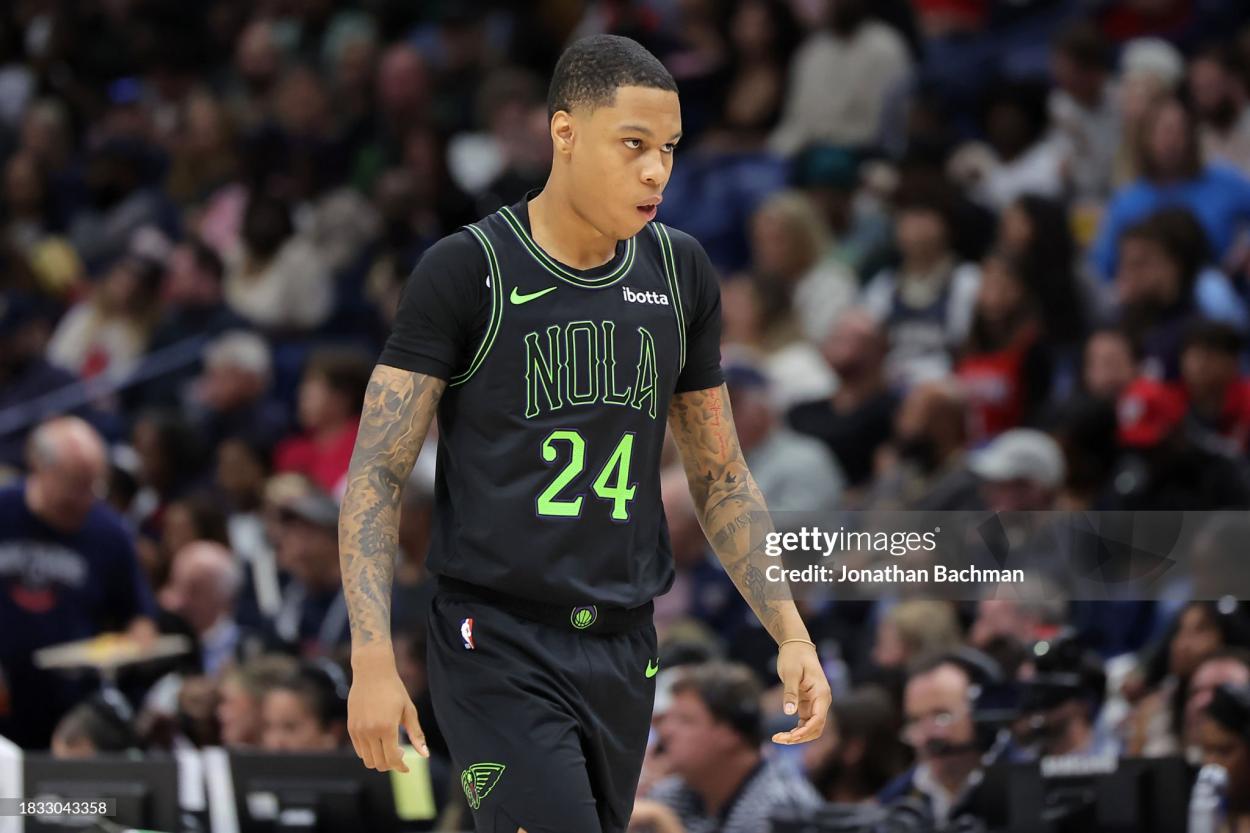
In the 2022-2023 season, Hawkins’ involvement increased drastically with his minutes increasing to 29.4. He started every game he played in and averaged an impressive 16.2 points to help the UConn Huskies have a successful season. The 21-year-old made 2.9 three-pointers per game which gained lots of attention from top teams in the NBA.
High shooting percentages often drop after college due to the increase in tough competition and packed schedules. However, Hawkins managed to maintain a solid percentage from the field, which gained trust from head coach Willie Green. This combined with injuries in the team has allowed Jordan to play more minutes and adjust to the league faster than others in a similar position.
Stand-out performances
Hawkins led the Pelicans to a 118-108 victory against the Dallas Mavericks dropping a career high 34 points. He made six out of twelve attempts from beyond the arc and made 5 assists in 37 minutes. The guard used his fast movement and attacking IQ to position himself perfectly to score and was relentless going forward.
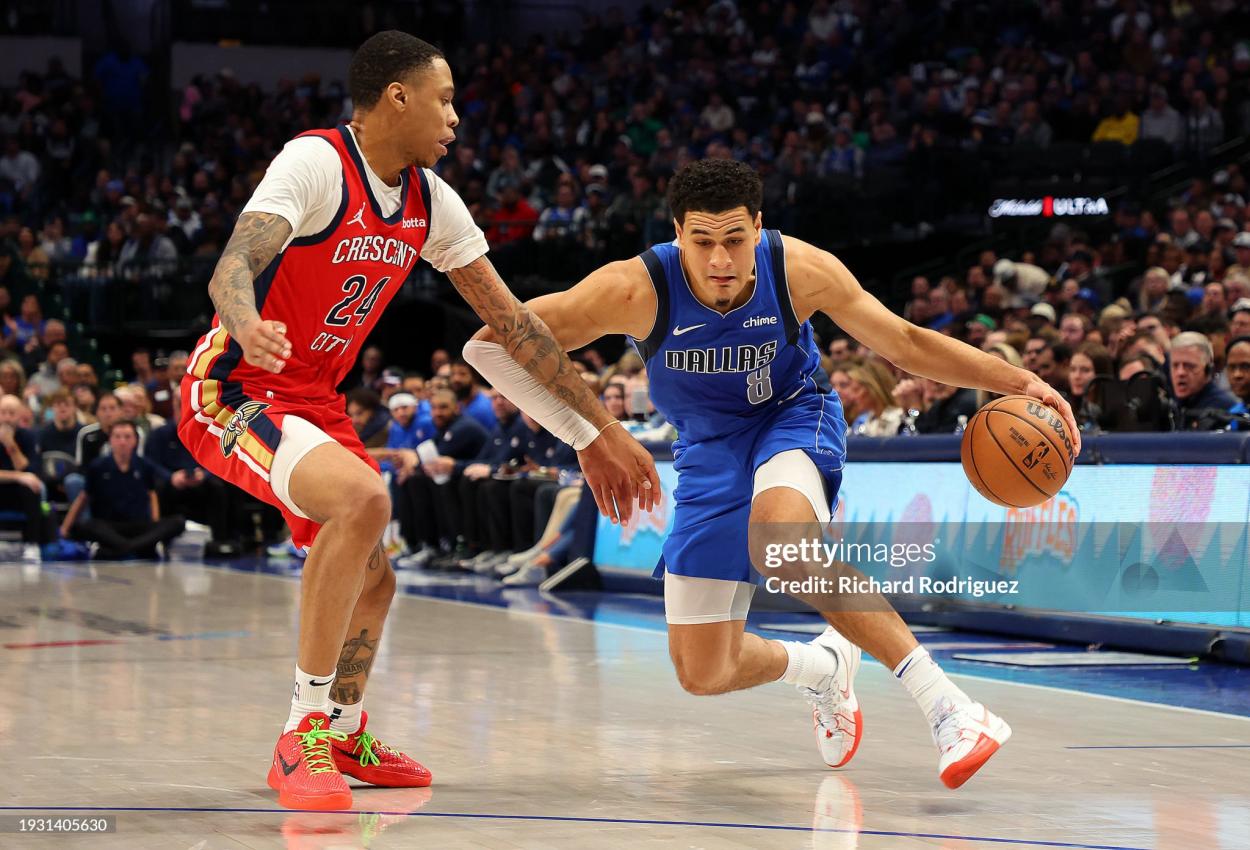
He also scored 31 points on the sixth of November against the Denver Nuggets where the Pelicans lost 134-116. Jordan made seven three-pointers and collected seven rebounds only seven games into the season. He showed no fear when tightly guarded and caused chaos for the opposition on the perimeter.
In one of his most recent games against the Charlotte Hornets, he scored 21 points in only 24 minutes and 18 points from outside the D. This performance came only a few days after his impressive game against the Mavericks.
How does he compare to the greats?
Many fans and former players call Stephen Curry the greatest three-point shooter of all time, which Hawkins will hope to achieve in his career.
In Curry’s debut season, he scored 17.5 points per game on a 43.7 three-point percentage which cemented him as one of the most efficient guards in the league. He also averaged just over 36 minutes a night and quickly became the main man for the Golden State Warriors.
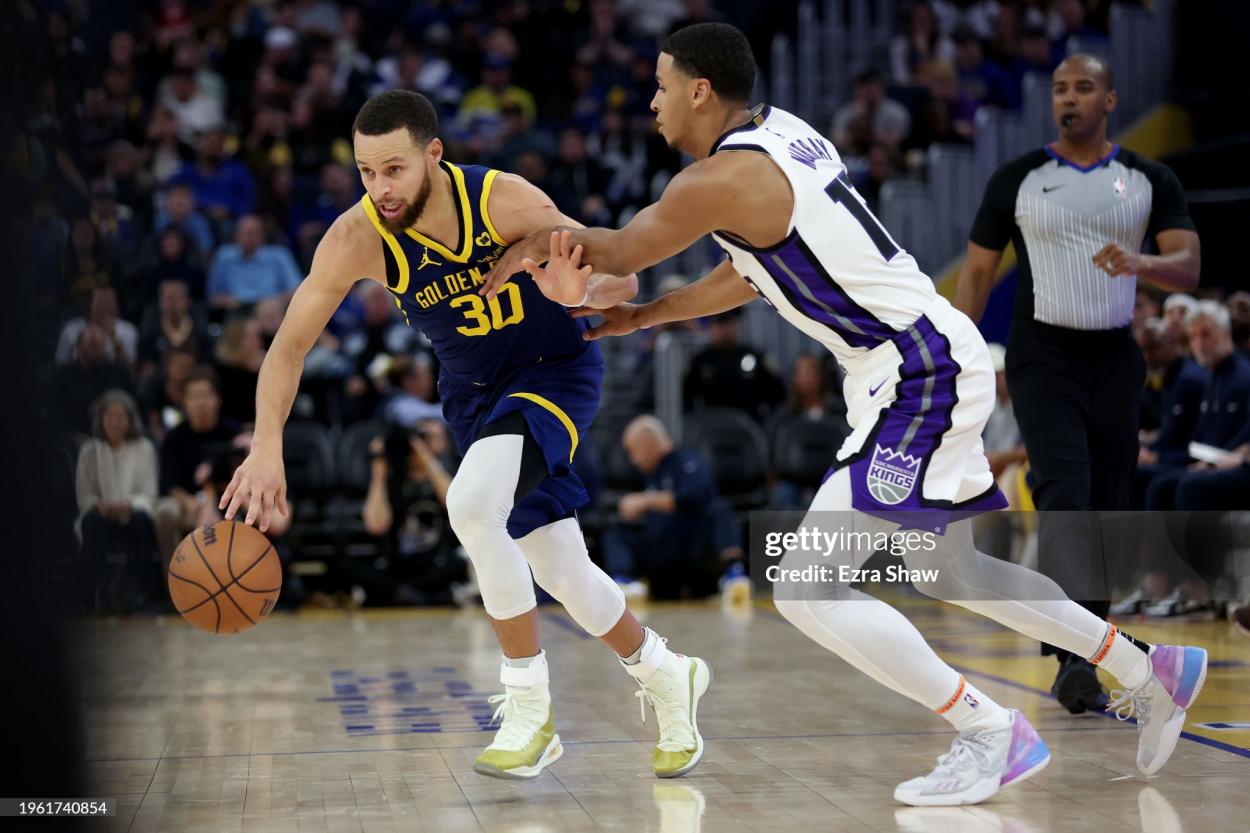
Whilst Hawkins is not reaching these numbers yet, he has only been given limited minutes to consistently score a high volume of points from range. This means his development may not be as fast as Steph’s in his first year.
Ray Allen is also seen as one of the greatest three-point shooters and stands at the same height as Jordan at six foot five. He averaged around 40 minutes a game in his debut season and scored 13.4 points.
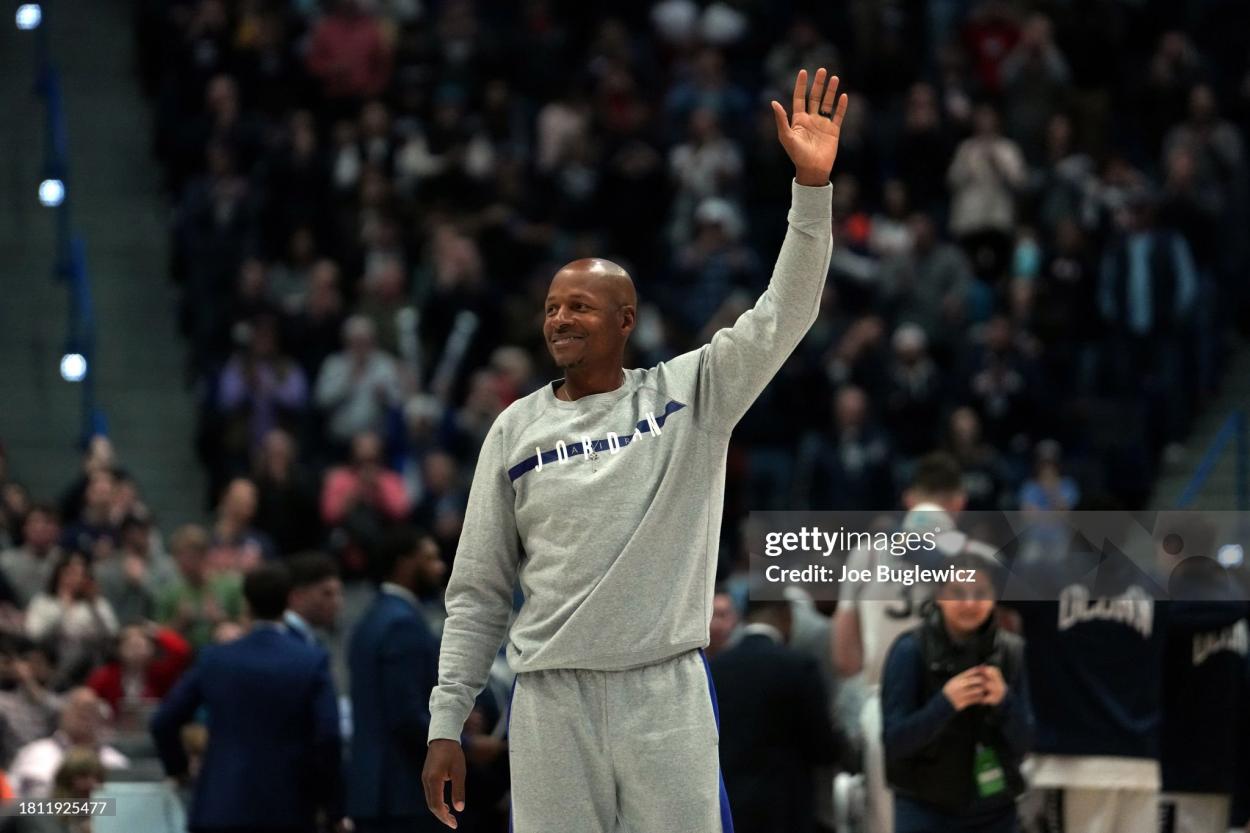
The experienced guard had a 39.3 three-point percentage in that same year and had a long and successful career. His best performances came in the 2005-06 season averaging an astonishing 3.4 three-pointers per game in a struggling Seattle Supersonics team.
What next?
If Hawkins can increase his minutes and keep a similar shooting percentage, he could be a crucial part of the Pelicans' success in the future and establish himself as one of the best shooters in the league.

